"Big Balls" is a game on a triangle board for two persons from 8 years up, duration 10-15 minutes. It was invented by Ingo Althofer and Jakob Luebke, Copyright July 2006.
The board contains 28 hollows in seven rows: 7 hollows in the bottom row, 6 hollows in the second row, 5 hollows in the third row, ..., 1 hollow in the upmost row. (28 = 1 + 2 + 3 + 4 + 5 + 6 + 7.) The picture shows the board, including coordinates for the hollows.
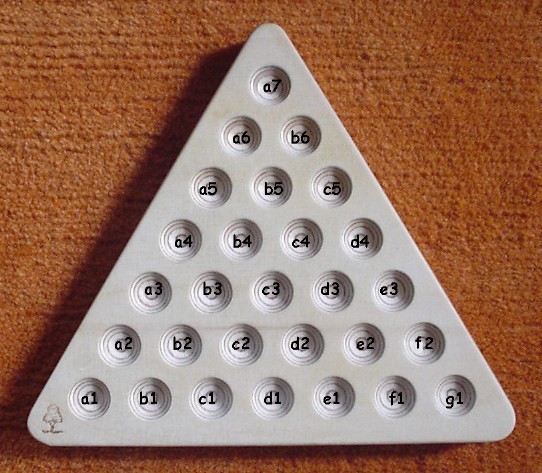
The players are called Black and White. Player Black has six black stones, with numbers 1 to 6. Player White has six white stones, also with numbers 1 to 6. In addition, there are six neutral big balls (without numbers). Finally, the game needs a traditional 6-sided-die (with numbers 1 to 6).
Preparation for the Game
The black stones are shuffled and then placed in
the six hollows in the lower left corner of the
game board. (These hollows have the coordinates
a1, b1, c1, a2, b2, a3.) Analogously, the white
stones are shuffled and placed in the six hollows
in the lower right corner (with coordinates e1, f1,
g1, e2, f2, e3). The big balls are placed in the
top six hollows of the board (with coordinates a7,
a6, b6, a5, b5, c5).
Target and Course of the game
Each player tries to reach the topmost hollow (a7)
with one of his stones. Simultaneously you have to
take care that not all of your stones get off the
board.
The two players move alternatingly. The younger one
starts, or in case of a revenge game the one who
lost directly before.
Each hollow which does not belong to some border of
the board has six neighbouring hollows. One possible
way to distinguish the neighbours is by direction.
In clockwise order these directions are:
northeast(ne), east(e), southeast(se),
southwest(sw), west(w), northwest(nw).
The player to move has a choice:
* either he rolls one of the big balls one
step downwards (in direction southeast or southwest).
Such a "big ball move" is forbidden only, if the
target hollow contains another big ball. In case of
a black or white stone in the target hollow this
stone is captured and taken off the board.
A big ball in the bottom row can not move any further.
* or he decides to move one of his own stones.
In this case he has to roll the die. The resulting
number decides - exactly like in "EinStein wurfelt
nicht" - which stone(s) he may move (the number he
rolled, or if this stone is out already the next lower
or next higher number still on the board).
Admissible moves are single steps in upward or sideward
direction: nw, ne, w, e. If there is any piece in the
target hollow this piece (let it be a black stone or a
white stone or a big ball) is captured and taken off the
board.
* A player is not allowed to pass. Especially: if there
is no more move with a big ball, the player has
to roll the die and move a corresponding own stone.
End of the Game
The game may end in three different ways:
(1) One player has pushed one of his stones
in the upmost hollow (a7). This player is
immediate winner.
(2) There are no more legal moves for the player
whose turn it is. Then this player has lost (and
his opponent won).
(3) There are only big balls left on the board, and
at least one of the balls can still be moved. Then there
is no winner: the game is a draw.
In most cases the game ends according to condition (1).
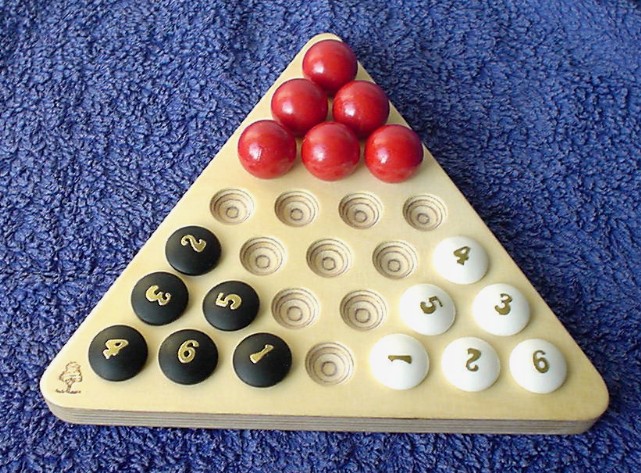 The Random Starting Position
The Random Starting Position
Black has the first move. In the notation below:
"x" means a capture move
"-" is a move without capture
"BB" means a move of a big ball
a move starting with a number means "die has been rolled".
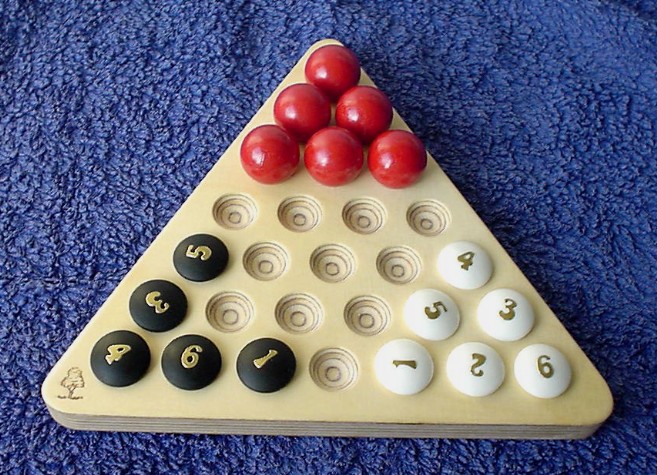 The position after Black's first move.
The position after Black's first move.
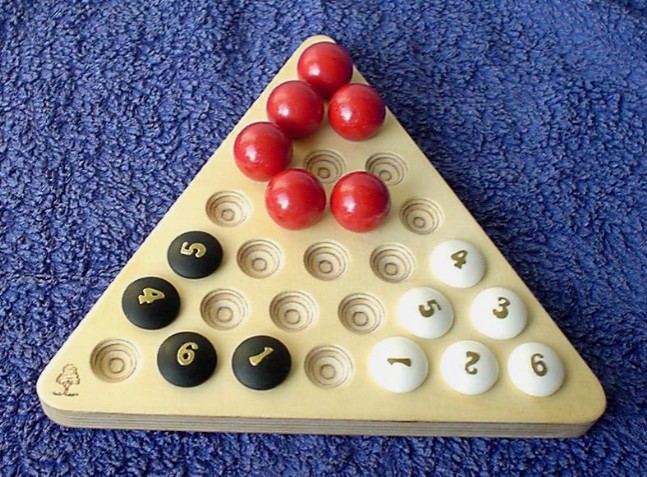 The position after move 4.
The position after move 4.
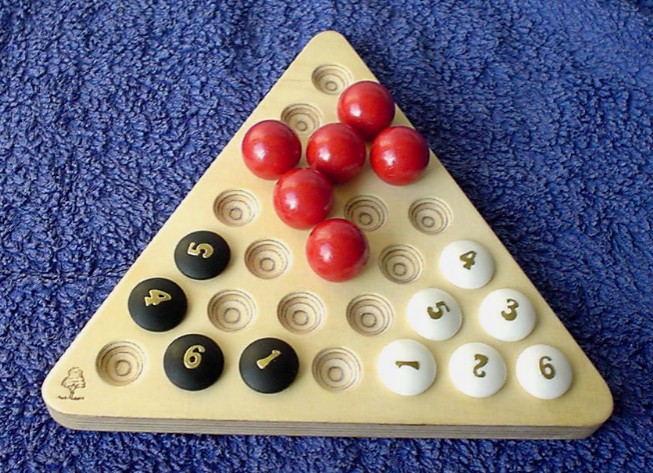 The position after move 8.
The position after move 8.
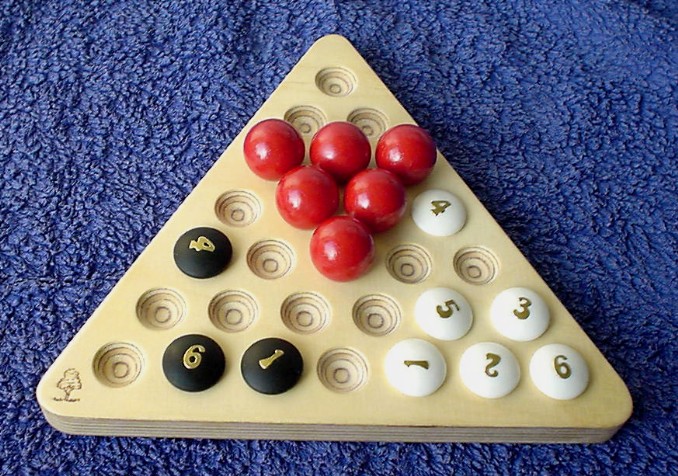 The position after move 12.
The position after move 12.
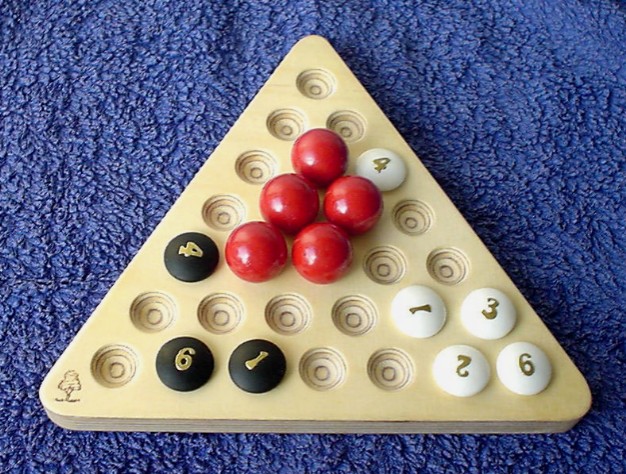 The position after move 16.
The position after move 16.
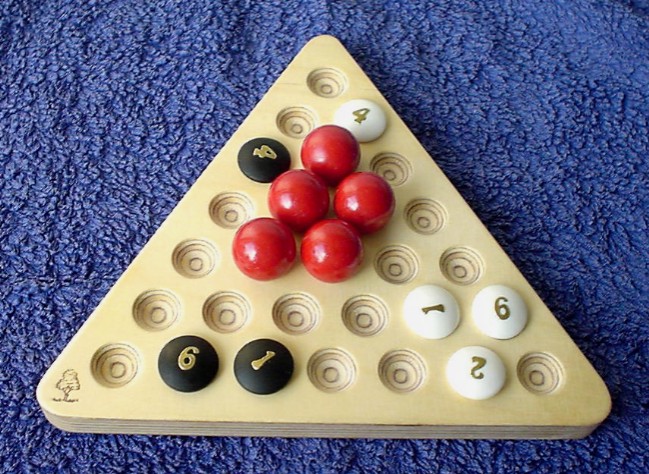 The position after move 20.
The position after move 20.
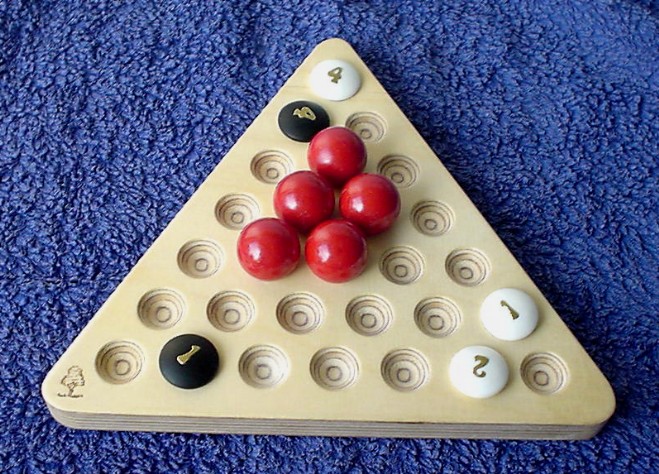 The position after move 24.
The position after move 24.